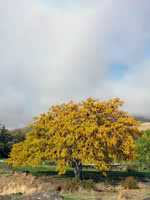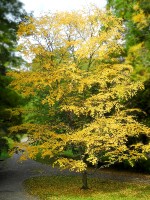Mon-Fri 9am - 5pm Mountain time
Thornless Honeylocust vs Sweet Birch (Black Birch)
Gleditsia triacanthos inermis
Betula lenta
NOT AVAILABLE THIS SEASON - MIGHT RETURN
Thornless Honey Locust makes an excellent shade tree with its lacy foliage and dappled shade. The leaves are honey-yellow, light and airy, providing interesting color and texture to your landscape. This variety is thornless, and the seeds and pods provide food for wildlife such as deer and squirrels.
The Thornless Honey Locust is tolerant of drought, various soil conditions, and even road salt.
Sweet Birch (Black Birch) is an attractive tree with a rounded shape native to eastern North America that would be a good addition to landscapes. It has a conical growth shape when young and as it ages the shape becomes more rounded. When the leaves, shoots, or bark are crushed they give off a sweet scent, which is what gives the Sweet Birch its name.
In early spring, the trees can be tapped and the sap used to produce syrup or fermented and made into birch beer. Pollinators and birds are attracted to the Sweet Birch as the pollen and seeds serve as a good food source. In the fall, the leaves turn golden yellow which will brighten your landscape.
The inner bark has a strong wintergreen scent and has been used to produce oil of wintergreen. Small twigs and bark of the tree can be boiled in water to make a tasty Sweet Birch tea.

